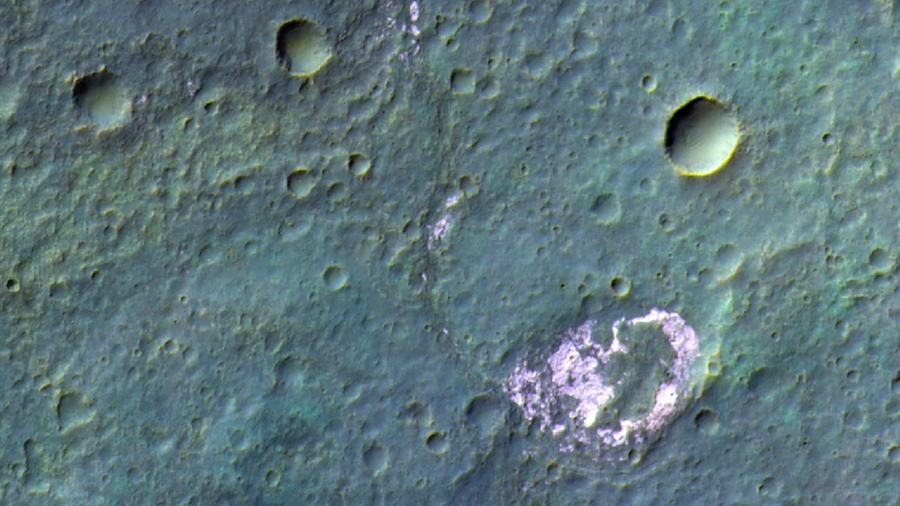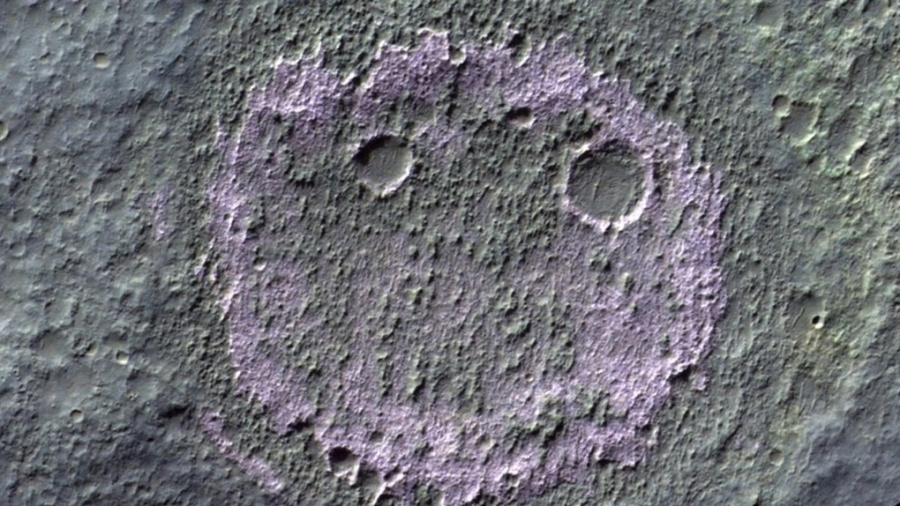In a recent development, astronomers have discovered a peculiar “smiley face” pattern on the surface of Mars, as revealed in a new study that surveyed the Red Planet’s landscape.
The European Space Agency (ESA) shared this intriguing image on Instagram, explaining that the unique shape is formed by an ancient chloride salt streak located within an impact crater. Typically, such deposits blend seamlessly with the rest of Mars’ surface. However, thanks to ESA’s ExoMars Orbiter, equipped with an infrared camera, these salt deposits stand out in pink and purple hues.

The European Space Agency (ESA) shared this captivating image on Instagram, revealing a “smiley face” formed by an ancient chloride salt streak within an impact crater.
Utilizing data from the ExoMars Orbiter, researchers have compiled the first catalog of 965 distinct chloride salt deposits scattered across the planet, with an average size ranging from 300 to 3,000 meters.
Beyond salt deposit surveys, the ExoMars Orbiter has been instrumental in studying the concentration of methane gas, along with other gases, in Mars’ fragile atmosphere since 2016. The discovery of these salt deposits on the planet holds significance as they may provide conducive conditions for biological activity and present enticing targets for future biological investigations.

The discovery of salt deposits on Mars is important as they could indicate favorable conditions for biological activity and offer intriguing targets for future biological studies.
Mars was once believed to be a water-rich planet, boasting lakes, rivers, and shallow oceans similar to those on Earth today. However, approximately 2 to 3 billion years ago, the planet underwent significant climate changes, resulting in a substantial decrease in its water supply. The cause of this transformation is still under investigation by scientists. One hypothesis suggests that Mars lost its magnetic field, causing the solar wind to strip away most of its atmosphere and leading to water loss.
Consequently, much of the liquid water froze or evaporated into space, rendering Mars the arid planet we observe today. Nonetheless, the salt residues left behind when the last of the water disappeared hold the key to unlocking the planet’s past and developmental history and may offer crucial clues in the search for ancient life on Mars.

































